SHRINE AT AHLAT
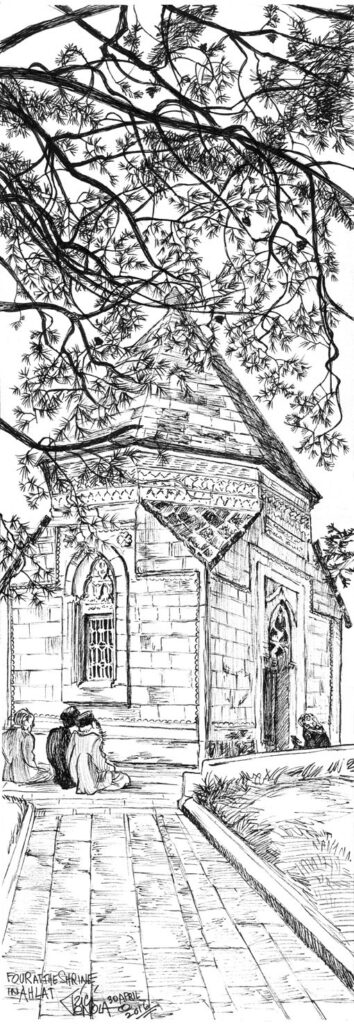
A great Muslim saint is buried here in this shrine. All day while I drew, groups of fundamentalist Muslim men came and knelt, praying at the shrine. While all the while a woman in traditional dress sat at right and tended to things on her phone.
KID & ANTIQUE BRONZE
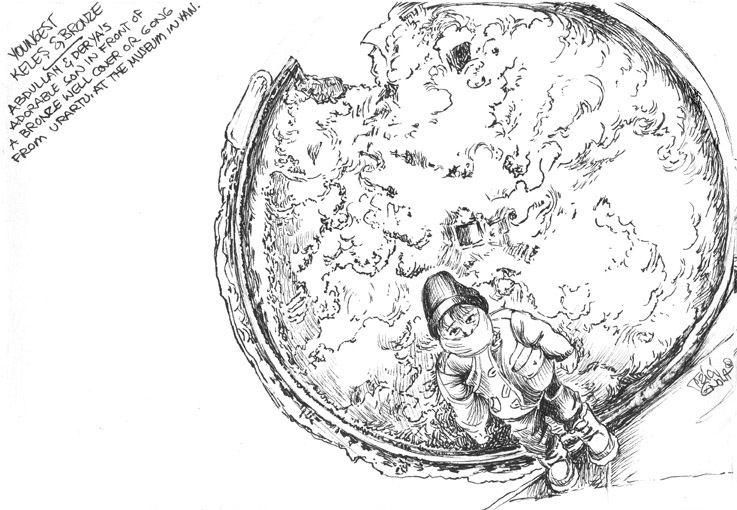
I dunno what it is, but it was perfectly round and looks heavy as all get-out.
THEY BOUGHT ME ICE CREAM
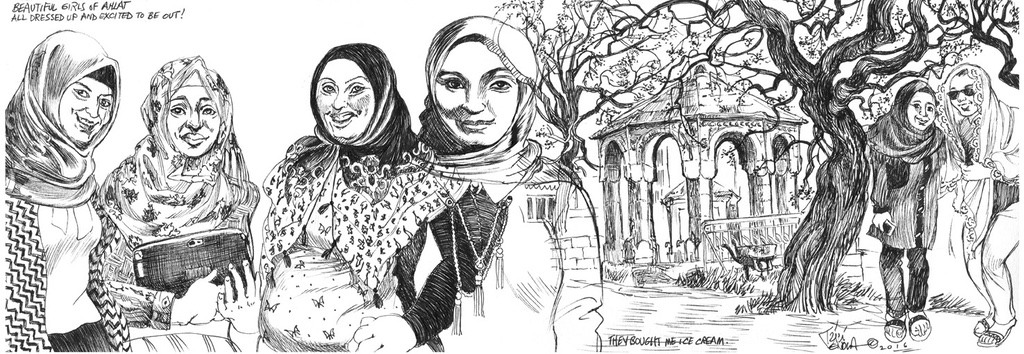
The shrine at Ahlat is the centrepiece of a vast landscaped cemetery that is also a park, on the edge of Lake Van. It was Sunday, and these girls were all made up and dressed up and out for the day, carrying their computers and phones, having a wonderful time. They crowded around while I was drawing the pavilion, tilted over the roots of the tree, and brought me an ice cream bar. Each girl looked very different, but they were all so vibrant and beautiful I just had to draw them.
HARMANTEPE
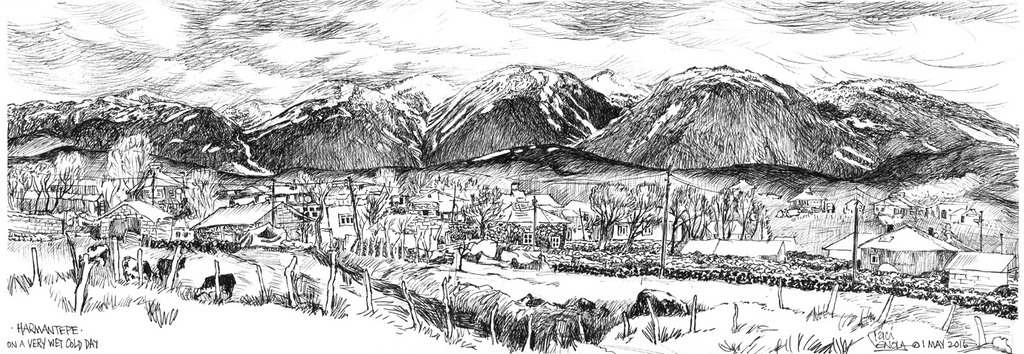
Another cousin of Celal’s, Ridvan, showed up at the hotel to take me at last to the village I’d come to draw, up in the mountains above Adilcevaz. We drove through misty rain under lowering clouds, with these four mountains brooding in front of us all the way: dark and implacable. On the way, we stopped for a flock of sheep, and I got out and took a photograph of this village. I was able to get this drawing later. It took hours, and the rain would have made it impossible in any case.
NAZIME AKKUŞ
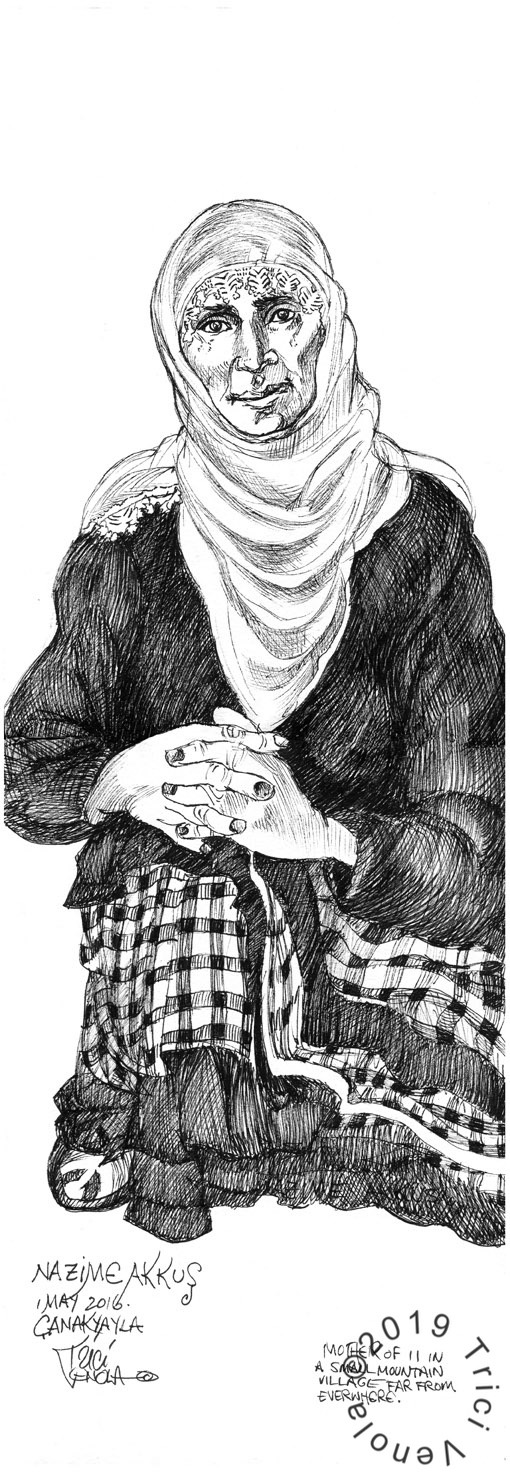
Far from everywhere except the spectacular mountains, the fields, and each other. Nazime told me that she had 14 children, but three died. She is Cela’s mother’s sister. This lady was 71 when she posed for me, and I did not cheat on her looks: she really does look like Jean Simmons the actress.
MEHMET ALI AKKUŞ
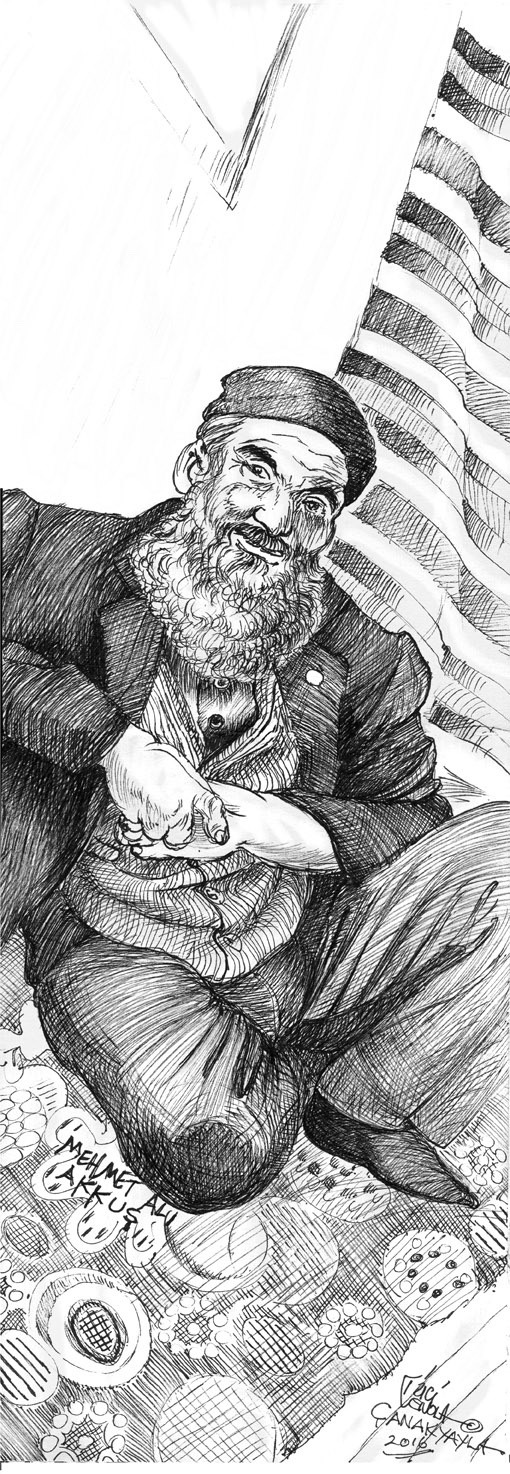
Nazime’s husband had to work the fields that day, so his brother came to act as host. All the while I was drawing, a bunch of small boys ran in and out and perched here and there, watching, while Nazime’s daughters and daughters-in-law came in and out laughing and bringing food. It was a happy day.
THEIR OLD HOUSE IN ÇANAKYAYLA
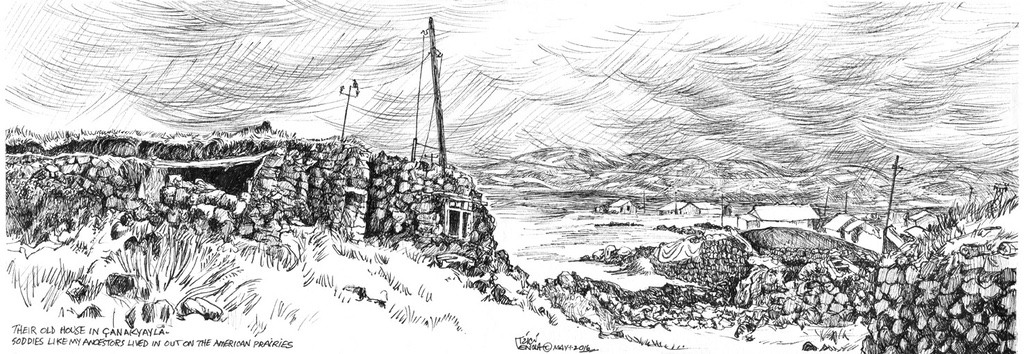
This is the village Celal’s mother was born in; drawing it was the reason for the project. When his mother was born, people undoubtedly lived in this house, which showed clear remains of a kitchen. Somebody lived in it not too long ago, for there were still the rags of curtains fluttering near the remains of a window. To the right, a rock house with a sod roof shelters sheep. In the distance are modern cinderblock houses. Notice the electrical lines. Until recently, villages as remote as this one had no electricity at all.
WOMEN OF THE AKKUŞ FAMILY
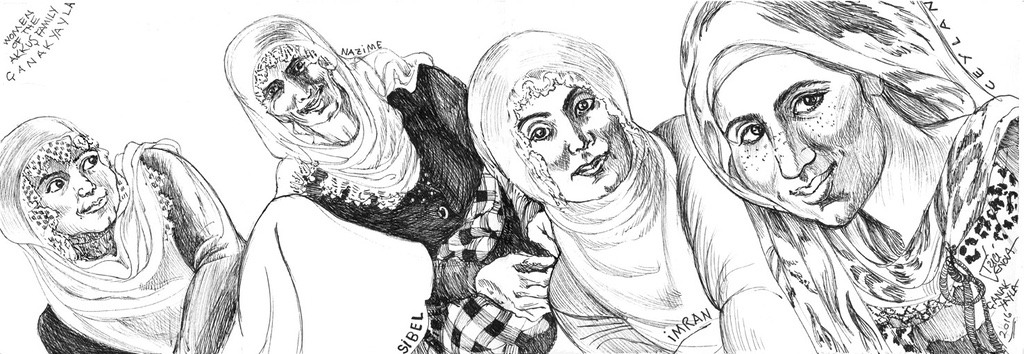
These are traditional girls, and one is married into the family. They never show their faces except to their husbands and to other women, but they were happy to be drawn. We had a fine time with much cracking up. The white lacy kerchiefs are for married women. Ceylan’s is streaked with vivid colour as she was yet unmarried. Whenever RIdvan or Mehmet came into the room, back went the face veils. All around our feet was a horde of obstreperous little boys. I posted a commemorative photo, but got an immediate call from Celal in Istanbul requesting I take it down. Two of the girls’ husbands worked for him at the restaurant there. “Kids are fine,” he said, “and drawings are great, but nobody wants a picture of his wife or sister all over the Internet.” But they loved the drawings.